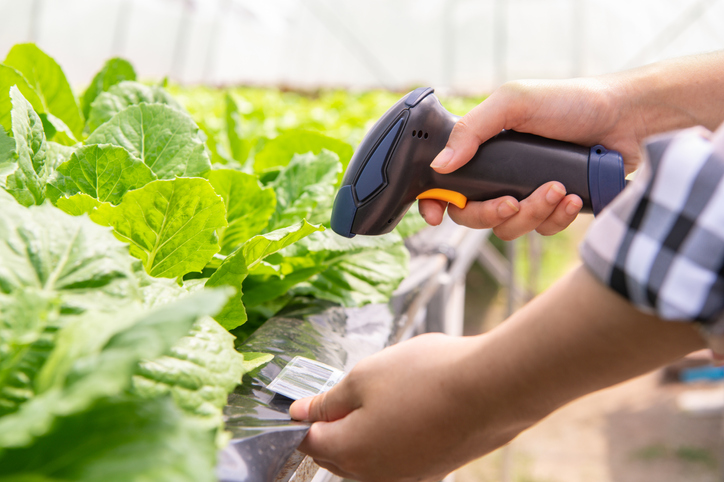Editor’s note: Joseph Byrum is an Aspen Institute Business & Society fellow and spent 25 years as an R&D executive in the agricultural industry. This is the fifth in a series of guest articles on the potential impact of artificial intelligence (AI) technologies on food security.
The views expressed in this article are the author’s own and do not necessarily represent those of AFN.
Could fingerprints one day make your food safer? Well, a form of fingerprinting just might do so.
Whether you are opening a bank account, applying for a passport, crossing a border, or simply unlocking your smartphone, you are most likely being tagged by some form of biometric identification. Biometric technology is widely used in public services and the financial sector. It’s even built into many of the latest consumer devices.
Biometric technology is used to identify individuals through the measurement of unique physical or behavioral characteristics. This is a modern interpretation of an ancient technique. In the wild west, for example, sketch artists would draw the likeness of outlaws so that they could be on “wanted dead or alive” posters that outsourced the identification process to bounty hunters.
This technique was upgraded over time to use more precise technologies like photography, and later, computer generated image recognition, iris recognition, voice recognition, and fingerprinting. The most recent developments in biometrics now include what is being termed as soft biometrics, which instead of focusing on the precise measurement of specific physical characteristics of an individual, focuses on the sum of the unique structural features of an individual’s complete face.
Biological fingerprinting technology has a critical role to play in food safety. Instead of identifying people, biometrics can be used to perform a statistical analysis of the biological and organic status of post-harvest agricultural produce. It would do so through a statistical analysis of the rate of change for the nutritional composition of a given item of produce as it makes its way through the supply chain. Such as system requires smart biometrics that can instinctively adapt the analysis to specific produce and food types.
Traditional food safety methods are labor-intensive, requiring physical inspections and chemical sampling of farm produce. Despite the amount of effort involved, the process offers no guarantee of safety. It’s impossible to inspect every piece of produce before it makes its way to market. The system relies instead on random inspection of a statistically appropriate selection of products to find the bad apples and rotten meat before they can make their way to store shelves.
Biometrics offer a smarter method of inspection, one that measures specific biological and chemical parameters appropriate to each commodity. As the inspection process for vegetables is different than that for fruit as it is for red meat and fish, AI can help work through the complexity of developing the biometric signatures for each type of farm produce.
Smart biometrics in agriculture would combine hyperspectral imagery and algorithmic machine learning to the inspection of farm produce so that the inspection process would become more timely and more effective. Digital imaging and spectroscopy would be used to examine the total biological status of individual items of farm produce. Measurement of biological features would include things such as physical appearance, moisture content, nutritional content as well as freshness levels.
Light interacts with the biological features of organic objects in unique ways. Machine learning algorithms would catalog the signatures of individual produce and develop a system for identifying problems. Ultimately, these digital fingerprints should be far more effective in identifying the subtle signs of contamination, spoilage and other problems long before they would be apparent to a human inspector.
A California-based startup, ImpactVision, has been developing the idea of using cameras mounted above conveyor belts to perform real-time analysis of food quality. Instead of relying on random samples, the system performs non-invasive analysis of all the produce as it comes out of a processing facility. Such an analysis is both deeper and broader than traditional inspection techniques. Among its reported features, ImpactVision can distinguish between thawed and fresh fish, analyze the tenderness of meat, and determine freshness of fruits. Likely, this is just an early taste of what’s ultimately possible.
Even testing everything before it comes out of a single facility may not be enough. Contamination can happen anywhere along the way to the supermarket shelves, or it can happen at the restaurant or bakery before it reaches the consumer. Sophisticated biometric monitors could one day be stationed at each location to boost the safety of the entire food chain.
The complex problems of agriculture inspire AI solutions that require innovative thinking and a deep understanding of nature. Next week, we’ll bring together the concepts already discussed and show how AI solutions are the best hope for achieving food security.




